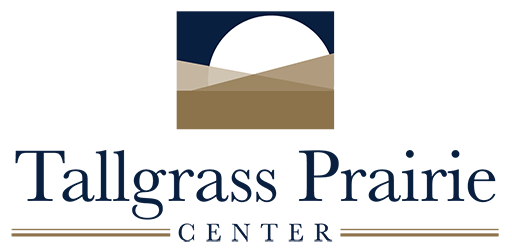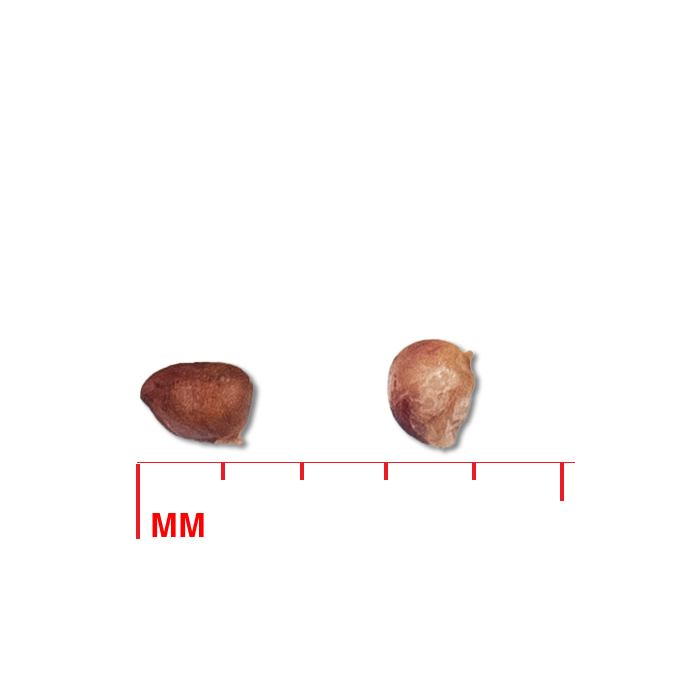Virginia strawberry
Table of Contents
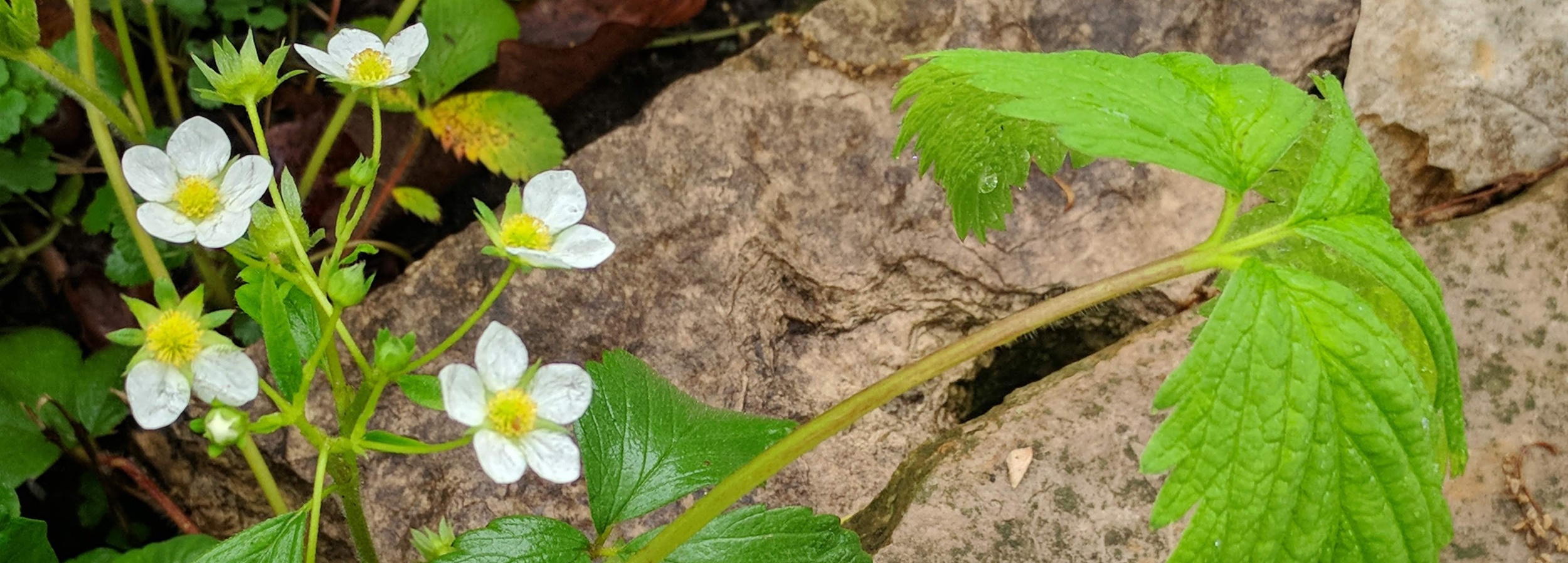
Fragaria virginiana Duchesne
Alternate Common Names: wild strawberry, common strawberry
Scientific Synonyms: Fragaria australis, Fragaria canadensis, Fragaria grayana, Fragaria terrae-novae
Family: rose family (Rosaceae)
Functional Group: forbs (wildflowers)
Description
- Life cycle and growth form
perennial, spreading by runners to form extensive clones.
Height: 4-8 in
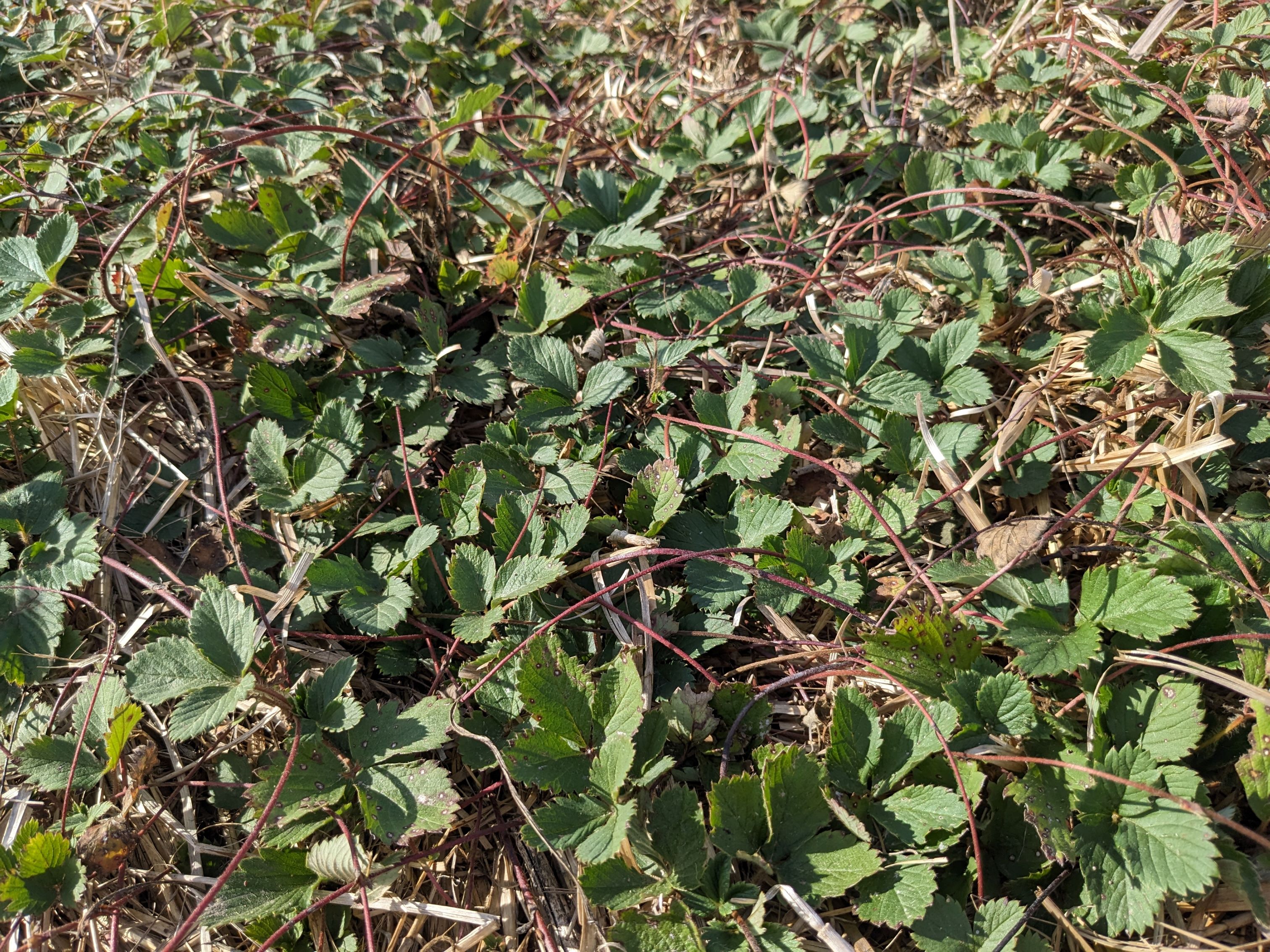
- Leaves and stem
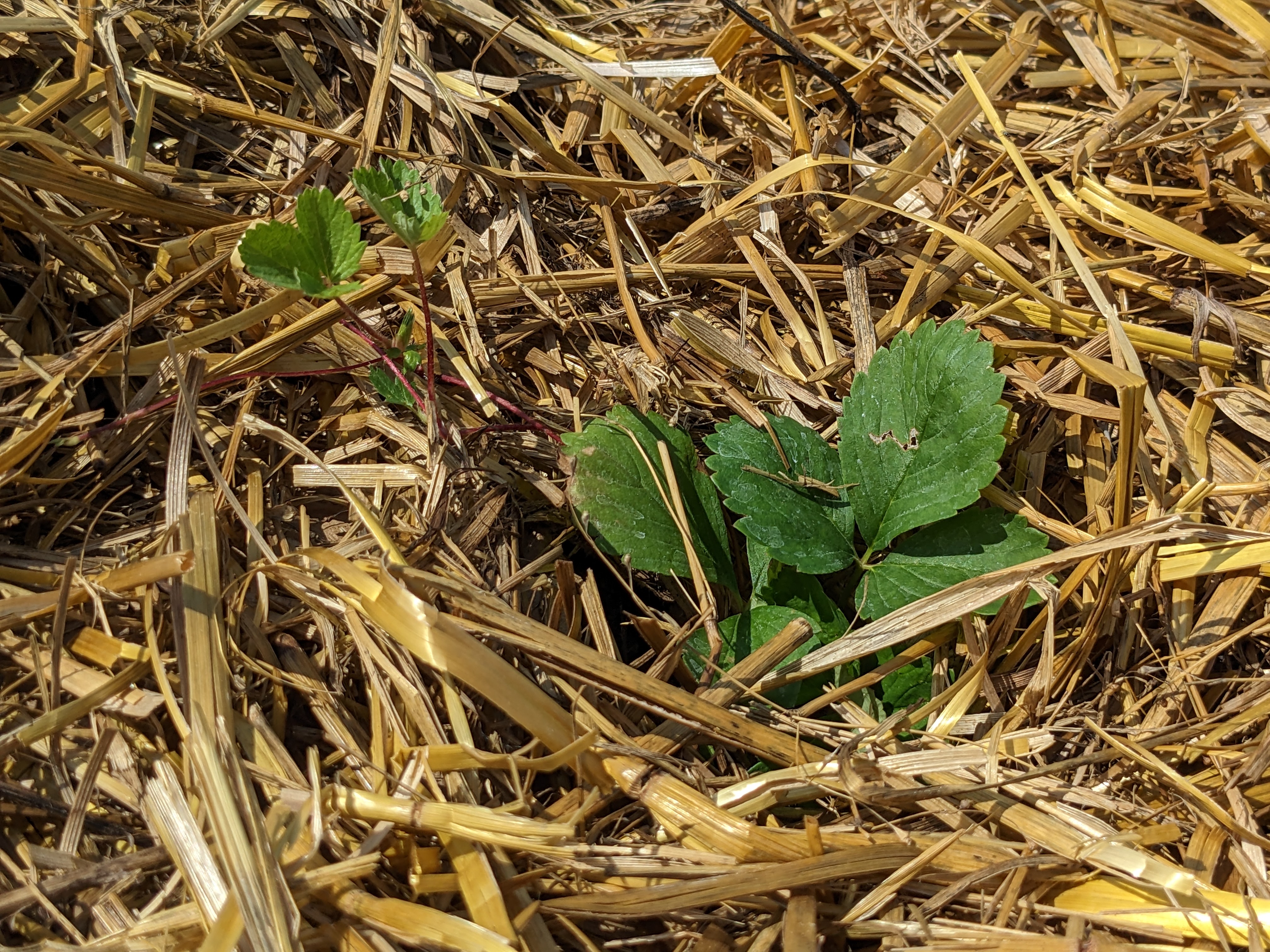
leaves basal, palmately compound; oval shaped leaflets (3) are up to 2.5 in long and 1.5 in wide with coarsely toothed margins and often finely haired, especially on the undersides; stems are sprawling stolons, often reddish in color, that root at the tips where new plants can emerge.
- Flower, fruit and seedhead
Flower: regular, five-petaled, 1/2 in diameter, petals white, stamens and pistils in center of flower yellow, 4-6 flowers in a loose cluster that is usually shorter than the leaves.
Fruit/seedhead: 1/2 in globular to ovoid “berry” with numerous achenes (“seeds”) in pits on the berry’s surface, bright red at maturity.
Pollination: Insects such as bees, flies, and butterflies.
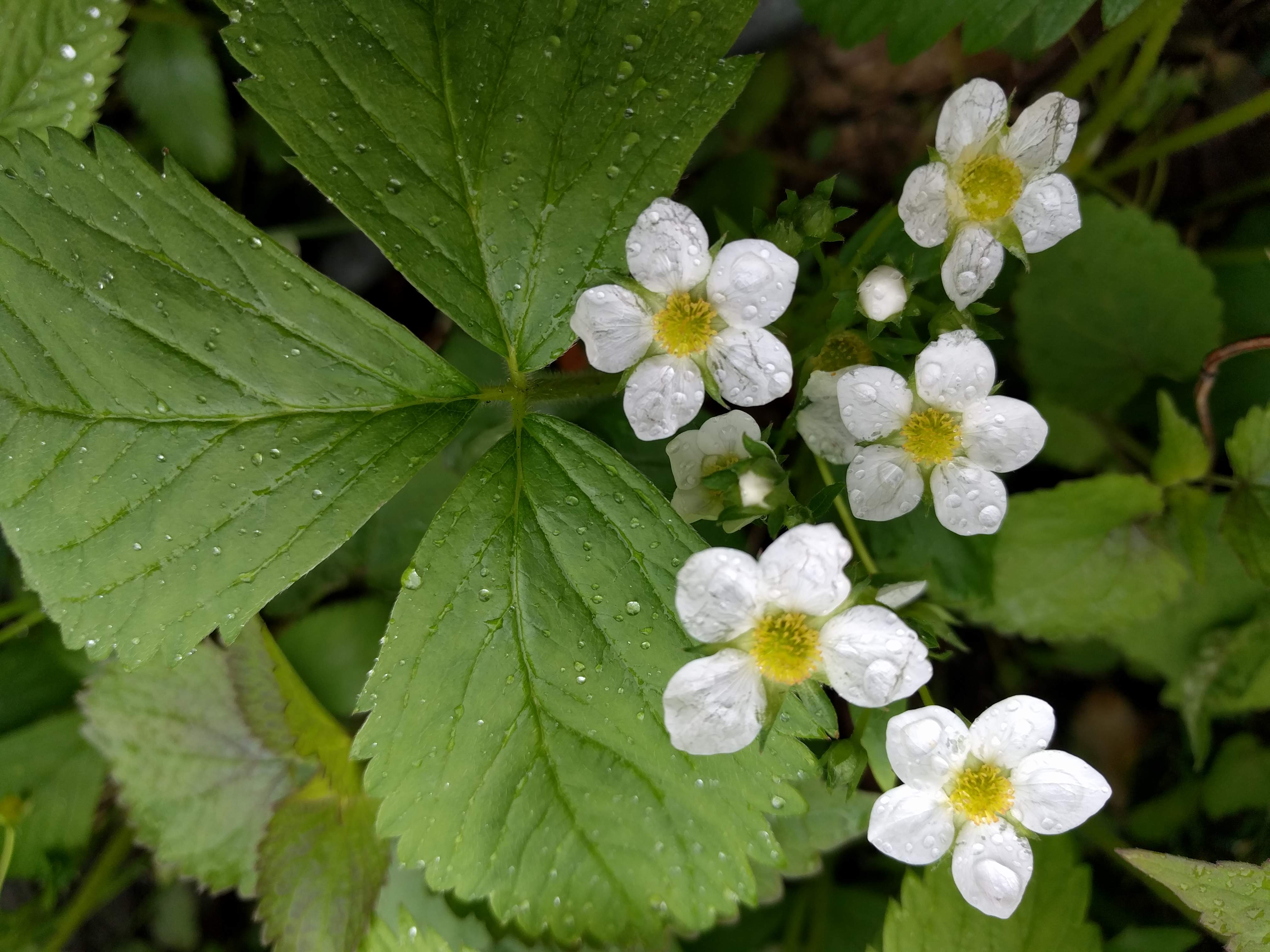
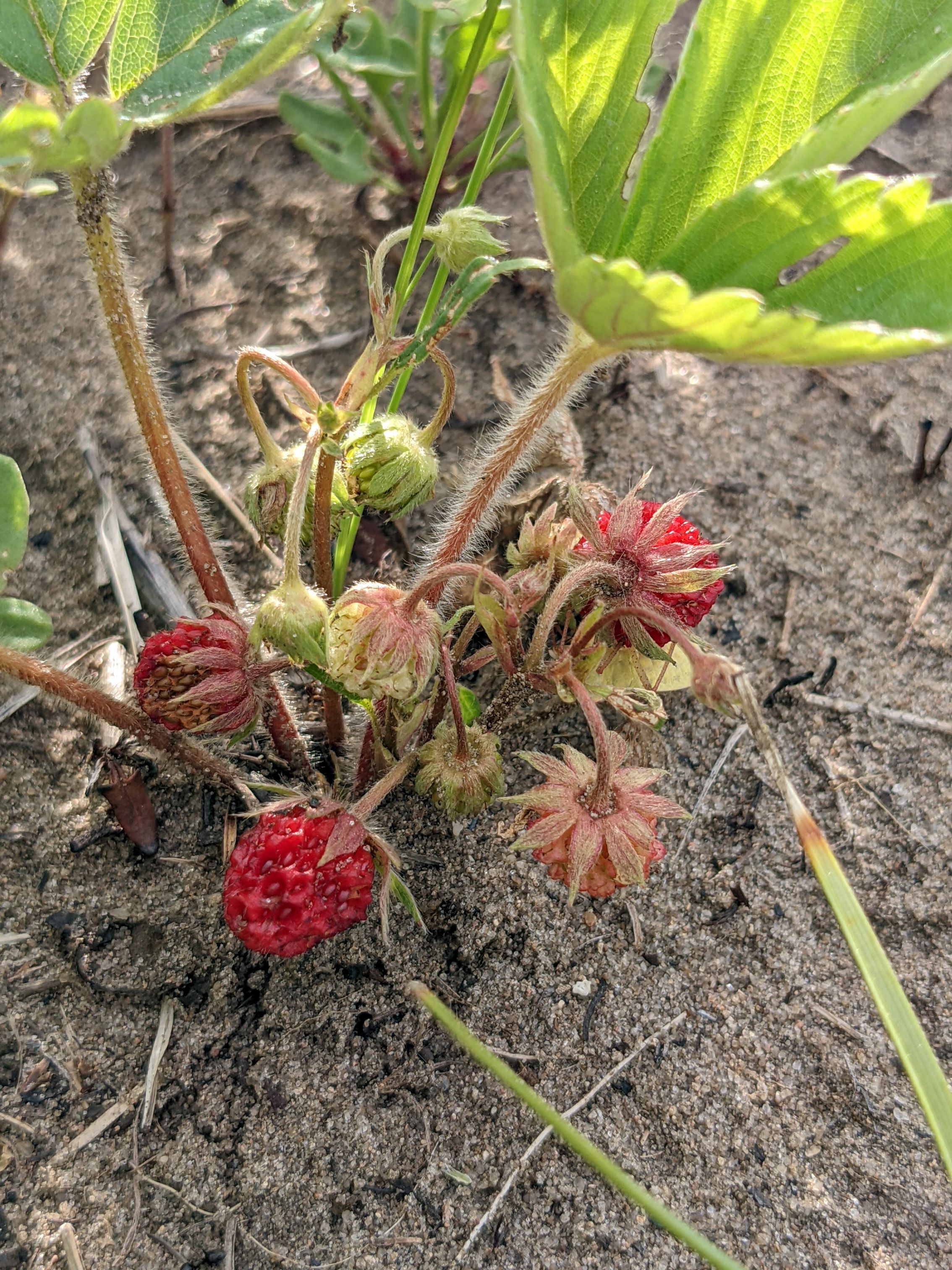
- Seed
Seed characteristics
Seed weight:
Seeds per ounce: 83,000 (Prairie Moon)
1000 seed weight: 0.46g (Seed Information Database)
Description: “Seed” is a reddish-brown achene, 1.2-1.8 mm in diameter, roughly egg-shaped.
Typical seed test
PLS: 83.35%
Purity: 99.81%
Germination: 21%
Dormancy: 61%
TZ: 85%
(averages obtained from 1 test of a purchased seed lot, and 1 test of seed produced at TPC)
- Habitat and range
Habitat: Dry to moist soil; partial to full sun; prairies, meadows, woodland openings and edges, roadsides, along railroads, savannas, limestone glades; Wetland Indicator Status is Facultative Upland (FACU) for the Midwest.
Conservation status: Global- G5, secure; Louisiana- S1, critically imperiled; Nevada- S2, imperiled; Illinois- S2/S3, imperiled to vulnerable (NatureServe)
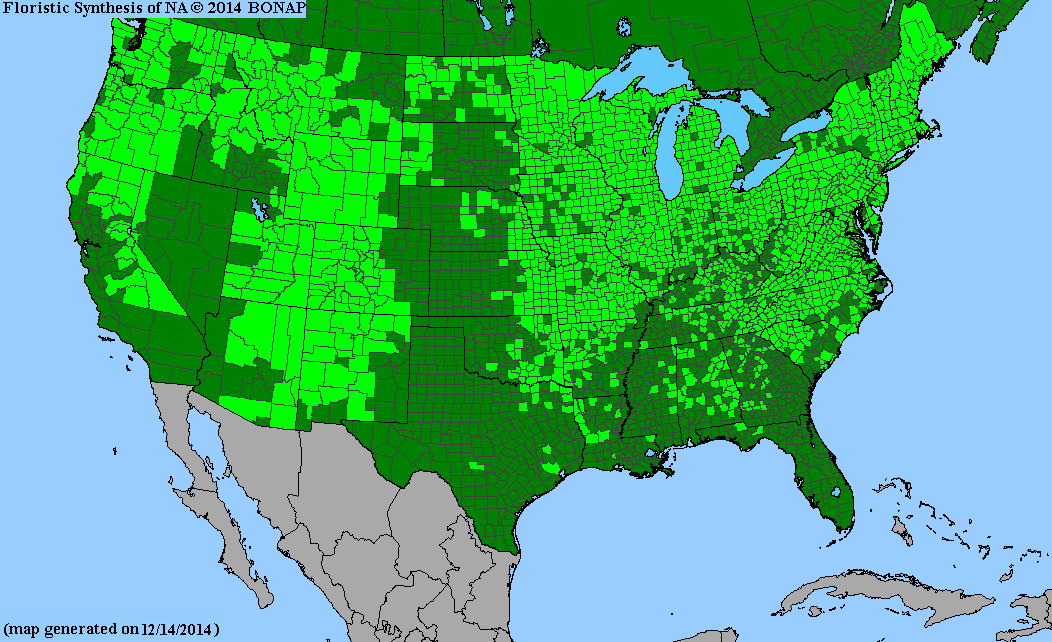
General Comments
Virginia strawberry can be found in the “understory” layer of most remnant prairies in Iowa. These small plants pack a large ecological punch. They flower early in the season, providing nectar and pollen resources for many species of small bees, flies, and skipper butterflies. Various herbivorous insects and mammals feed on the leaves, and the fruits are eaten by birds, mammals, and even reptiles (turtles), which disperse the seeds. When wild strawberries were abundant across the Iowa landscape prior to agricultural conversion, the fruits were an important early summer food for both Native people and Euro-American settlers. Virginia strawberry is one of the species that produced the cultivated strawberry through hybridization. Propagation and processing of this species is not difficult compared to other prairie forbs, and the most significant barrier to seed availability is probably the cost of labor required to pick the berries several times during the 2-3 week fruiting season.
Recommendations for Seed Production
- Establishment for seed production
Direct seeding
We do not have experience with direct seeding this species for seed production.
Greenhouse
Seed pre-treatment: 8 weeks cold/moist stratification
Sowing: Sow seed in greenhouse 8-10 weeks before average frost free date; spread stratified seed on germination flats and lightly cover (1/8 in or less) with germination mix; move seedlings to plugs when they have a pair of well-developed true leaves.
Transplanting: When plugs are well rooted and danger of frost is past, harden off seedlings and transplant into weed-free beds prepared with biodegradable paper mulch weighted with clean straw. Mulch must be biodegradable so that the new plantlets that form at the ends of stolons can grow roots into the soil.
- Stand management
Weeds: Biodegradable mulch in the first growing season suppresses most weeds; mowing at the highest setting of a typical riding mower after the fruiting season keeps weeds from becoming overly competitive in the second year.
Pests: Mammalian herbivores may browse foliage, and birds and small mammals consume fruits.
Diseases: None noted, though diseases that affect commercially grown strawberries such as botrytis molds may become a problem.
Plot renewal: Commercially grown strawberries are known to produce more fruit at the edges of plots. Since wild strawberries are closely related to the cultivated varieties, they may behave similarly, and techniques of cultivation, fertilization, and irrigation that are used by commercial strawberry farms may be beneficial. We will update this information as we gain more experience.
- Seed production
First Harvest: Plants flower and set fruit in the second year after planting.
Yield/Acre: 17-18 lbs of seed per acre (extrapolated from first year’s production of one production plot); it takes roughly 30 pounds of berries to obtain a pound of seed.
Stand Life: Probably long-lived, but production may decline as plots grow densely in subsequent years; plants at the edges of clones may set more fruit than those within dense patches; techniques used for “renewing” cultivated strawberry production such as rototilling narrow strips through beds may be helpful.
Flowering Date: May in northern Iowa
Seed maturity/Harvest date: late May to mid June in northern Iowa
Seed retention: There is a risk of seed loss from animals consuming the fruit or from fungal diseases; during the fruiting season (2-3 weeks), berries must be picked every 2-3 days.
Harvest date range at TPC: May 26 to June 13 (first harvest, 2024)
Recommended Harvest Method: Hand pick every other day. The labor required to harvest the small berries is significant: it took over 40 person-hours to gather ripe berries from an 840 sq ft plot every few days over a 19 day period, yielding 11.52 lbs of fruit and 5.47 oz of clean seed.
- Seed cleaning and storage
Cleaning process: Place 2 parts water to 1 part fruit in a blender and process for 30 seconds. (Blender blades do not need to be altered or wrapped.) Pour the resulting mash into a 5 gallon bucket and add additional water. Stir, then allow the filled seed to settle out. Pour off the floating material, being careful to save the heavy seed at the bottom (J. Carstens, USDA-NCRPIS, personal communication, January 10, 2022). Spread the seed onto muslin cloth and place in front of a fan to dry. Airscreening will remove remaining debris.
Seed storage: cool/dry (33-50° F, 30-50% RH)
Released Germplasm
Source Identified material: Natural Selections/Iowa Ecotype Zone NI
The map below shows the collection locations for populations used in development of this ecotype on a base map of the Generalized Provisional Seed Transfer Zones of the US Forest Service.
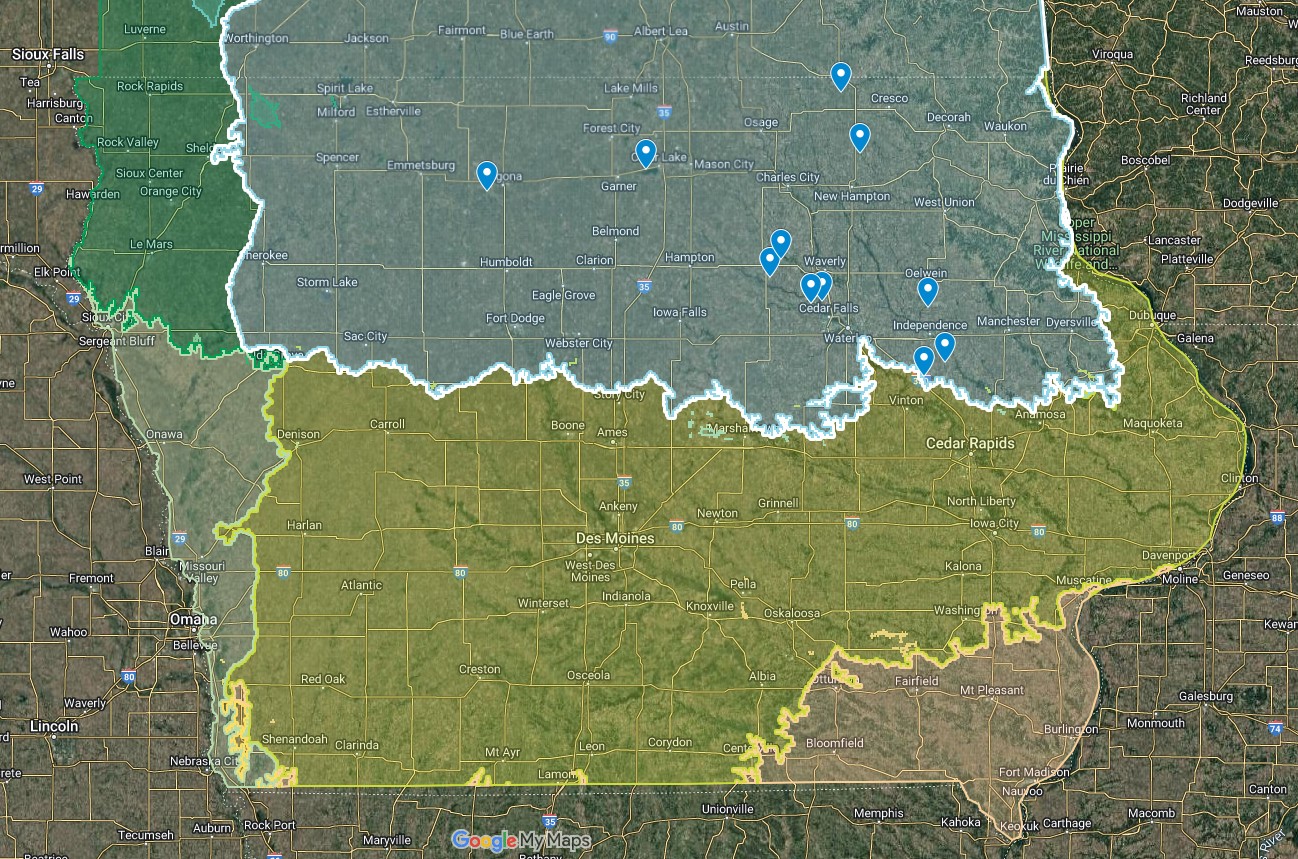
- References
Chayka, Katy. (n.d.). Fragaria virginiana (wild strawberry). Minnesota Wildflowers. https://www.minnesotawildflowers.info/flower/wild-strawberry
Cochrane, T. S., Elliot, K., & Lipke, C. S. (2014). Wild strawberry. In Prairie plants of the University of Wisconsin-Madison Arboretum (3rd ed., p. 301). University of Wisconsin-Madison Arboretum.
Gleason, H. A., & Cronquist, A. (1991). Rosaceae. In Manual of Vascular Plants of Northeastern United States and Adjacent Canada (2nd ed., p. 242). The New York Botanical Garden.
Kartesz, J.T., The Biota of North America Program (BONAP). 2023. North American Plant Atlas. (http://bonap.net/napa). Chapel Hill, N.C. [maps generated from Kartesz, J.T. 2023. Floristic Synthesis of North America, Version 1.0. Biota of North America Program (BONAP). (in press)]
NatureServe. 2024. NatureServe Network Biodiversity Location Data accessed through NatureServe Explorer [web application]. NatureServe, Arlington, Virginia. Available https://explorer.natureserve.org/. (Accessed: February 28, 2024).
Staudt, G. (2020, July 30). Fragaria virginiana (Miller). Flora of North America. http://dev.floranorthamerica.org/Fragaria_virginiana
University of Minnesota Extension. (2025). Strawberry Farming. https://extension.umn.edu/fruit-and-vegetable-farming/strawberry-farming
USDA NRCS National Plant Data Team. (n.d.). Fragaria virginiana Duchesne. USDA plants database. https://plants.usda.gov/home/plantProfile?symbol=FRVI
Species Guide Updated 2/3/2025

